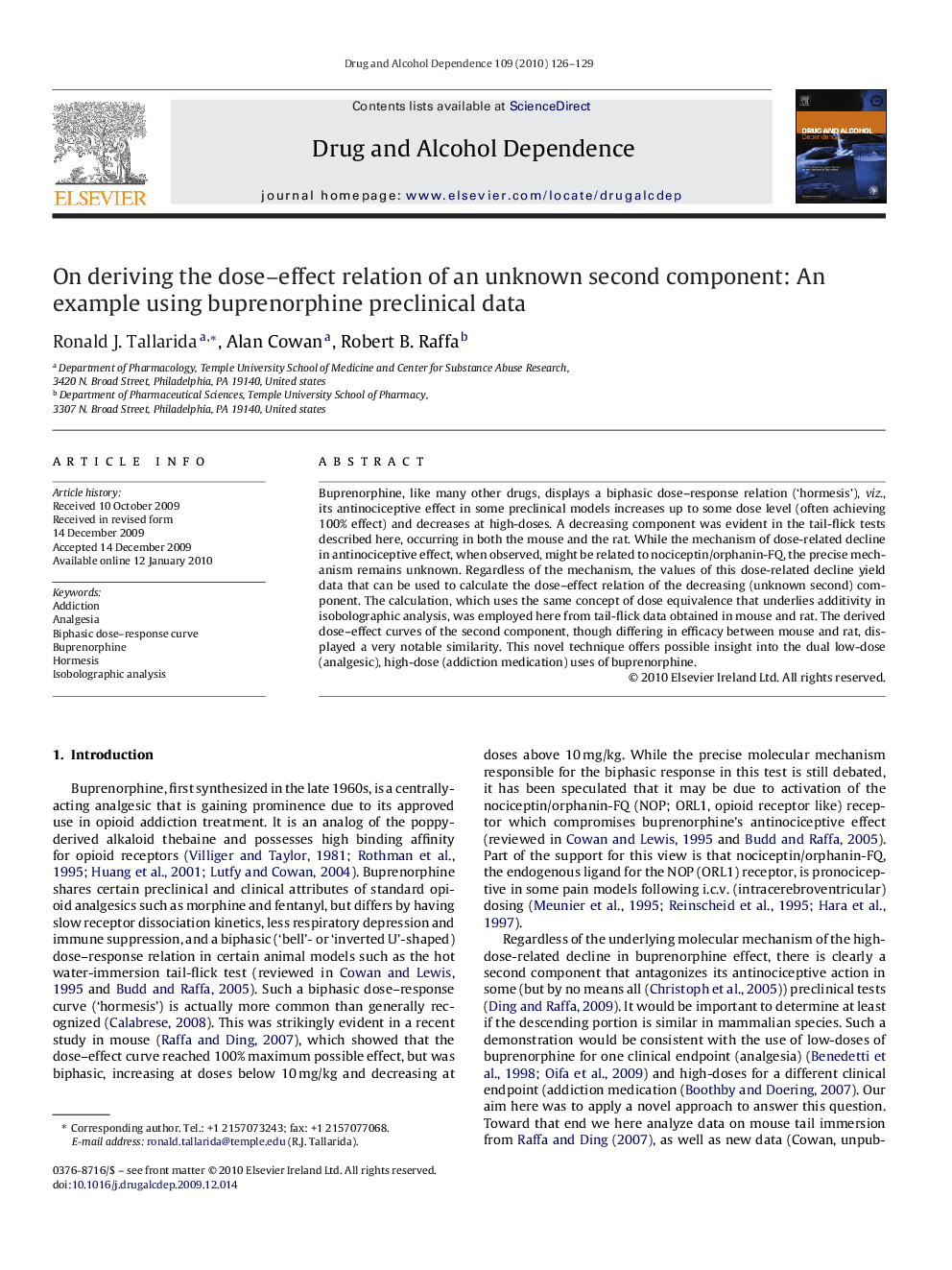| Article ID | Journal | Published Year | Pages | File Type |
|---|---|---|---|---|
| 1070769 | Drug and Alcohol Dependence | 2010 | 4 Pages |
Abstract
Buprenorphine, like many other drugs, displays a biphasic dose-response relation ('hormesis'), viz., its antinociceptive effect in some preclinical models increases up to some dose level (often achieving 100% effect) and decreases at high-doses. A decreasing component was evident in the tail-flick tests described here, occurring in both the mouse and the rat. While the mechanism of dose-related decline in antinociceptive effect, when observed, might be related to nociceptin/orphanin-FQ, the precise mechanism remains unknown. Regardless of the mechanism, the values of this dose-related decline yield data that can be used to calculate the dose-effect relation of the decreasing (unknown second) component. The calculation, which uses the same concept of dose equivalence that underlies additivity in isobolographic analysis, was employed here from tail-flick data obtained in mouse and rat. The derived dose-effect curves of the second component, though differing in efficacy between mouse and rat, displayed a very notable similarity. This novel technique offers possible insight into the dual low-dose (analgesic), high-dose (addiction medication) uses of buprenorphine.
Related Topics
Life Sciences
Neuroscience
Behavioral Neuroscience
Authors
Ronald J. Tallarida, Alan Cowan, Robert B. Raffa,
